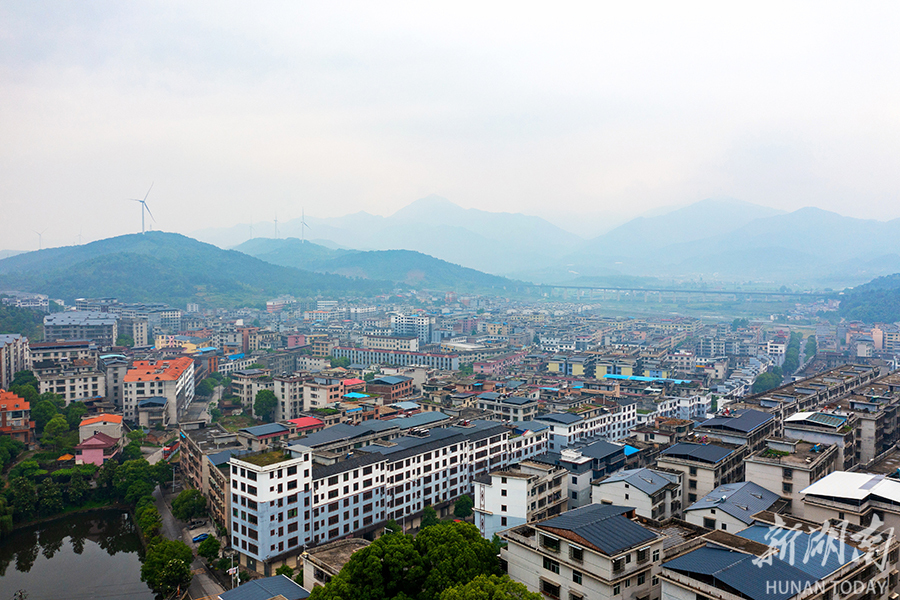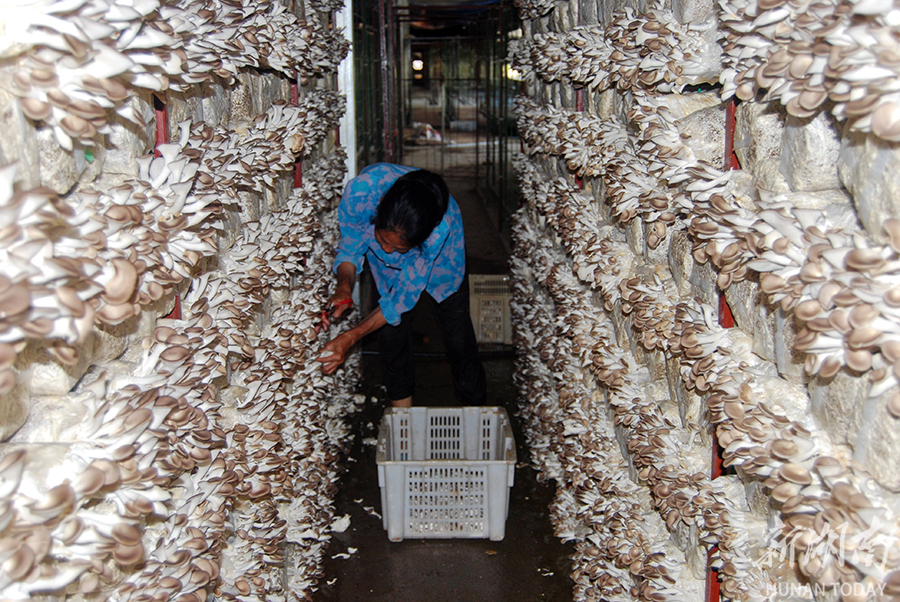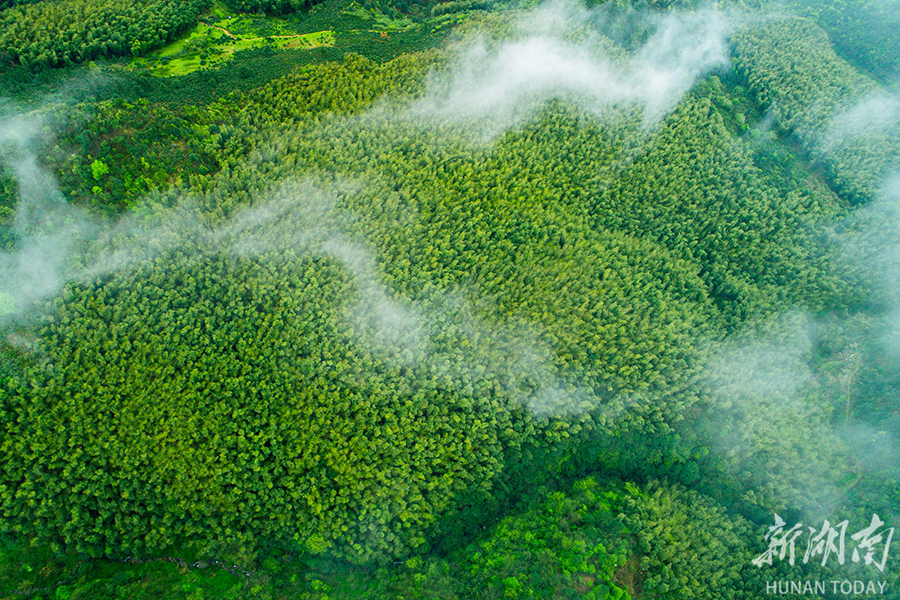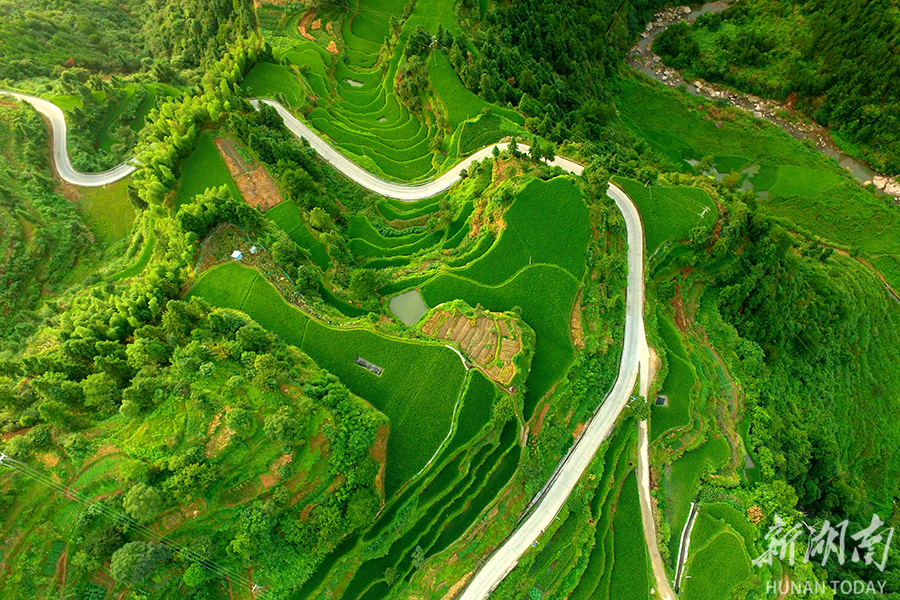Green building materials and cultural tourism drive prosperity in Liangtian Town
2023-06-19
Liangtian Town is located in the southern part of Suxian District in Chenzhou City, and serves as the gateway to the district. The town boasts convenient transportation and regional advantages, with the Hunan-Guangdong Ancient Road, National Highway 107, the Beijing-Hong Kong-Macao Expressway, and the Beijing-Guangzhou High-Speed Railway passing through it.
The town has green building materials as its leading industry, agriculture as its foundation, and cultural tourism as a new driving force. This strategy plays a critical role in making it a strong town and promoting rural revitalization.

In recent years, Liangtian Town has dedicated its efforts to prioritize the real economy, and done solid work to ensure security and stability, in a bid to promote economic development with focus on environmentally friendly building materials, sightseeing and tourism, industrial revitalization, and economic growth.
By promoting industrial development, the town aims to bring economic prosperity. At the entrance to the factory site of Hunan Liangtian Cement Co., Ltd., a subsidiary of China Resources Holdings, construction machines are in operation, while cement delivery trucks come and go.
The company has undergone several technical upgrades to improve its production processes. By July 2023, the installation and operation of a 5,000 tpd dry process cement clinker rotary kiln production line will bring about another significant transformation. This upgrade will increase the annual cement production capacity to 2 million tons, contributing to the company’s impressive growth.
Topaz Electronic Technology Co., Ltd. has a fully automated dust-free aluminum electrolytic capacitor production line consisting of four processes: winding, assembling, tubing, and aging.
After upgrading and improving the equipment, the company now has 43 most advanced and new domestic fully automatic dust-free aluminum electrolytic capacitor production lines, which can produce 550 million capacitors annually. In addition to supply the domestic market, the products can be sold to other countries such as the United States, South Korea, India, Russia, and Japan.

Liangtian Town leverages its mineral reserves to drive economic growth, with a scientific plan for the distribution of such resources and the creation of a green building materials industrial park. This has led to the clustered development of such companies as Southern Cement, Lianxin Environmental Protection, Fengxian Stone Industry, and China Resources Holdings, which encouraged other scattered enterprises across the country to follow suit and settle in the park.
At present, Hunan Lianxin Environmental Protection Building Materials Co., Ltd. has finalized its production equipment, and the main body of the factory is basically completed, while the floor of the calcium magnesium carbonate workshop has been hardened.
White wind turbines tower over the rolling hills, harnessing the power of the wind to generate electricity. Liangtian Town is committed to promoting the growth of the building materials industry while simultaneously accelerating the smooth construction of key projects such as the National Highway 107 bypass line, Chenzhou City’s kitchen waste harmless treatment project, and Sany Heavy Energy’s wind power project. This strategy seeks to capitalize on the town’s strengths to further develop its industries.
Zhicao Agricultural Science and Technology Development Co., Ltd. has a rhizoma gastrodiae planting base of 1,200 mu (80 hectares) and a professional mushroom planting cooperative with the planting area of 500 mu (about 33.33 hectares). It employs 130 farmers for long-term work and drives 1,200 households for employment. The local villagers see their total annual income increase by 8 million yuan.

In 2019, the company was recognized as a “vegetable basket” for the Guangdong-Hong Kong-Macao Greater Bay Area, and in 2023, it was awarded the “two certificates plus traceability” smart supervision benchmark enterprise in Hunan Province (the first in Chenzhou City). The registered trademarks of “Zhicao” and “Nanling Zhicao” have been recognized as famous trademarks in Hunan Province and are beloved by consumers as leading vegetable and fruit brands.
During the blooming season of cole flowers, Duishang Village is also a sight to behold with its lush green fields and the aroma of roasted tobacco in the air. As a traditional industry in the village, tobacco planting has been boosted by utilizing local resources and adopting various applicable technologies, leading to an impressive 500 mu (33.33 hectares) of tobacco planting area. Witnessing the transformation of green leaves into golden leaves, tobacco farmers have achieved prosperity.
In addition, the village has cooperated with Zhicao Agricultural to actively develop the edible mushroom industry through the “company, cooperative, and farmers” model, resulting in increased income for villagers and a thriving enterprise. The village’s success in this endeavor has earned it recognition as a national demonstration village for “One Village, One Product” (edible mushroom) and a billion-yuan village with rural characteristic industries.
Walking into the peach orchard of Hu Rong Family Farm in summer, one can admire the sight of bountiful branches heavy with ripe peaches. The farm operates under the “base plus farmers” business model, covers an area of about 110 mu (about 7.33 hectares), and specializes in planting a variety of fruit trees, such as Jingxiu Yellow Peach, Yingzui Peach, and Creamy Crispy Peach. As a result, the time of harvest is also the time of financial gain for farmers, with the sweet and delicious fruits serving as a source of increased income.
Beneath Wugai Mountain lies a lush forest with fertile soil that produces wild Chinese medicinal herbs such as Bletilla striata and Polygonatum. Xiangyang Yao Village has a long-standing tradition of collecting and selling these herbs to make a living, as the village’s survival depends heavily on the mountainous terrain.
Recently, to address the issue of dwindling supplies of wild medicinal herbs, Xiangyang Yao Village has made significant efforts to cultivate Bletilla striata and Polygonatum. The current planting area covers nearly 130 mu (about 8.67 hectares), and the healing fragrance of these medicinal plants spreads with the gentle sunshine and fresh breeze.

Liangtian Town’s well-established building materials and agriculture industries have become the driving force behind its tourism development. The town is committed to expanding its “Red tourism”, which involves delving deeper into historical resources related to revolutionary events. These resources include the Memorial Hall of Revolutionary Martyrs in Suxian District, the Ancestral Temple of “Merit in Serving the People” in Liaojiawan Village, and the Former Residence of Huang Jingyuan and Chen Youcai. The town is also actively promoting the construction of Red tourism projects, such as the “Revolutionary Martyrs Memorial Square” and “Red Army Long March Memorial Garden”.
The ancient residential cluster of Gaoyaling Village is the few well-preserved Qing Dynasty-style architecture in southern Hunan Province. At present, Liangtian Town is making concerted efforts to establish a range of service industries, such as safe and hygienic family hotels and restaurants, attracting both domestic and foreign tourists to visit the village for leisure and tourism, while simultaneously creating a sustainable path towards prosperity for villagers.
Cailing Village is renowned as the leading producer of procypris merus (a kind of fish bred in rice fields) and rice in China and has gained fame through its annual festivals. In spring, the village celebrates the Pear Blossom Festival, followed by the River Snail Festival in early summer, the Procypris Merus Festival in autumn, and the Health Preservation Festival in winter.
With advantageous access to the source of the Pearl River and the nearby scenic area of Yangtian Lake, Cailing Village has successfully organized eight consecutive high-mountain Procypris Merus and Rice Food Festivals since 2015. The village is actively promoting rural leisure tourism and is committed to creating an ecological agricultural paradise and summer resort to boost rural revitalization.





